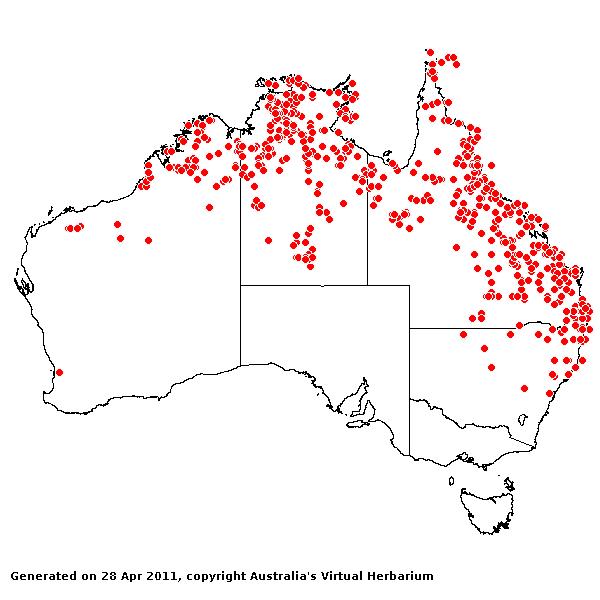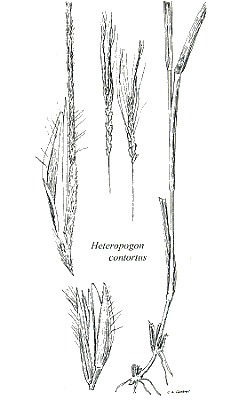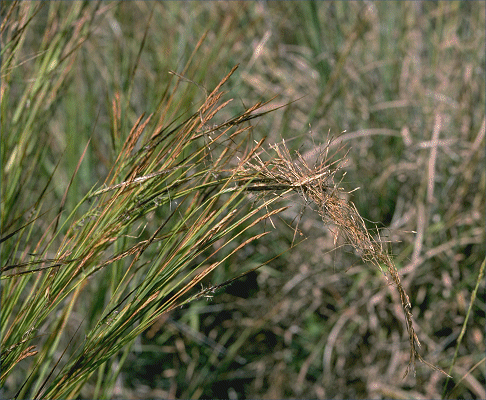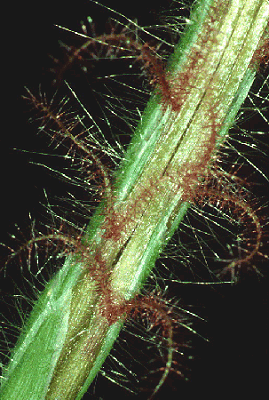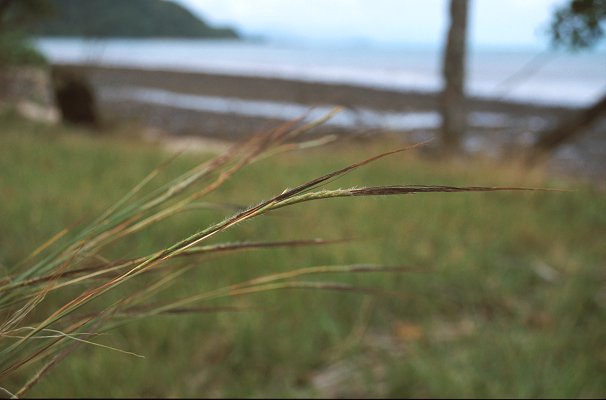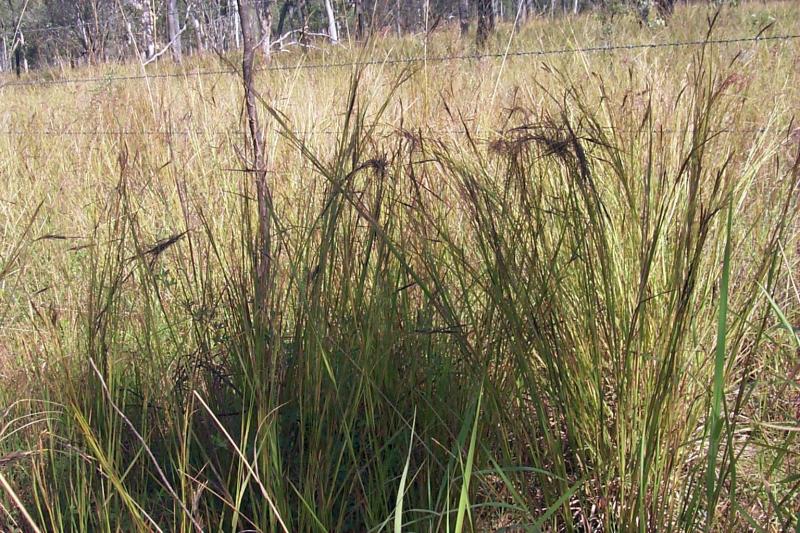Heteropogon contortus (L.) Beauv.
ex Roem. & Schult.
Syst. Veg. 2: 836 (1817).
Classification. (GPWG 2001) : Subfamily
Panicoideae. Andropogoneae.
Basionym and/or
Replacement Name: Andropogon
contortus L., Sp. Pl.
2: 1045 (1753).
Type of Basionym or
Protologue Information: India:,
Plukenet, Phyt. pl. 191, f. 5, 1692.
Key references
(books and floras): [1810]. R.Brown, Prodromus (201 as Andropogon
contortus), [1878] G.Bentham, Flora Australiensis 7 (517), [1952]
C.A.Gardner, Flora of Western Australia 1 Gramineae (341), [1969]
E.E.Henty, Manual Grasses New Guinea (108), [1981] M.Lazarides in
J.Jessop (ed)., Flora of Central Australia (494), [2002] D.Sharp &
B.K.Simon, AusGrass, Grasses of Australia, [2008] S.W.L.Jacobs,
R.D.B.Walley & D.J.B.Wheeler, Grasses of New South Wales (273).
Illustrations:
[1952] C.A.Gardner, Flora of Western
Australia 1 Gramineae (339, Pl. 99),
[1984] N.T.Burbidge. rev. S.W.L.Jacobs, Australian Grasses (151), [2008] S.W.L.Jacobs, R.D.B.Whalley
& D.J.B.Wheeler, Grasses of New South Wales, 4th edn (273).
Habit.
Perennial. Culms erect, 30–100 cm tall, 1.5–3 mm diam. Mid-culm internodes
solid. Mid-culm nodes glabrous. Lateral branches branched or fastigiate. Leaves
cauline. Ligule a fringe of hairs, 1 mm long. Leaf-blades flat or conduplicate,
3–30 cm long, 2–8 mm wide.
Inflorescence.
Inflorescence solid, a rame. Rhachis fragile at the nodes.
Spikelets.
Spikelets sessile, 1 in the cluster. Companion spikelets pedicelled, 1 in the
cluster. Basal sterile spikelets well-developed, 6–34 in number. Companion
spikelets developed, containing empty lemmas or male, asymmetrical, 5–15 mm
long. Companion spikelet glumes muticous. Fertile spikelets 2-flowered, the
lower floret barren (rarely male), the upper fertile, comprising 1 basal
sterile florets, comprising 1 fertile floret(s), without rachilla extension,
linear, terete, 5–10 mm long.
Glumes. Glumes
dissimilar, firmer than fertile lemma. Lower glume linear, hyaline or
coriaceous, without keels, 5–9 -nerved. Lower glume surface indumented. Upper
glume linear, 4 mm long, coriaceous, without keels, 3 -nerved. Upper glume apex
muticous. Florets. Basal sterile florets 1, barren, without significant
palea. Lemma of lower sterile floret 100 % of length of spikelet, hyaline, 2
-nerved.
Fertile lemma 3–5 mm
long, 1 -nerved. Lemma apex entire, awned, 1 -awned. Median (principal) awn
apical, 50–80 mm long overall, with a twisted column. Palea absent. Anthers 3.
Continental
Distribution: Europe, Africa, Temperate Asia, Tropical Asia, Australasia,
Pacific, North America, and South America.
Australian
Distribution: Western Australia, Northern Territory, Queensland,
New South Wales.
Western Australia: Gardner,
Fitzgerald, Hall, Dampier. Canning, Fortescue. Northern
Territory: Darwin & Gulf, Victoria River, Barkly Tableland, Central Australia
North, Central Australia South. Queensland: Burke, Burnett, Cook, Darling Downs,
Leichhardt, Maranoa, Mitchell, Moreton, North Kennedy, Port Curtis, South
Kennedy, Warrego, Wide
Bay, Gregory North. New South Wales: North Coast,
Northern Tablelands, North-Western Slopes, Central-Western Slopes,
North-Western Plains.
Notes. A
pantropic species found in Australia
in the wet tropical savannas from northern N.S W. to the Kimberley region of W.A. Very variable
morphologically, particularly the hairiness of the pedicelled spikelet. Readily
eaten by stock although the seed, with its pungent callus, presents a problem
at maturity. Flowers all year.

